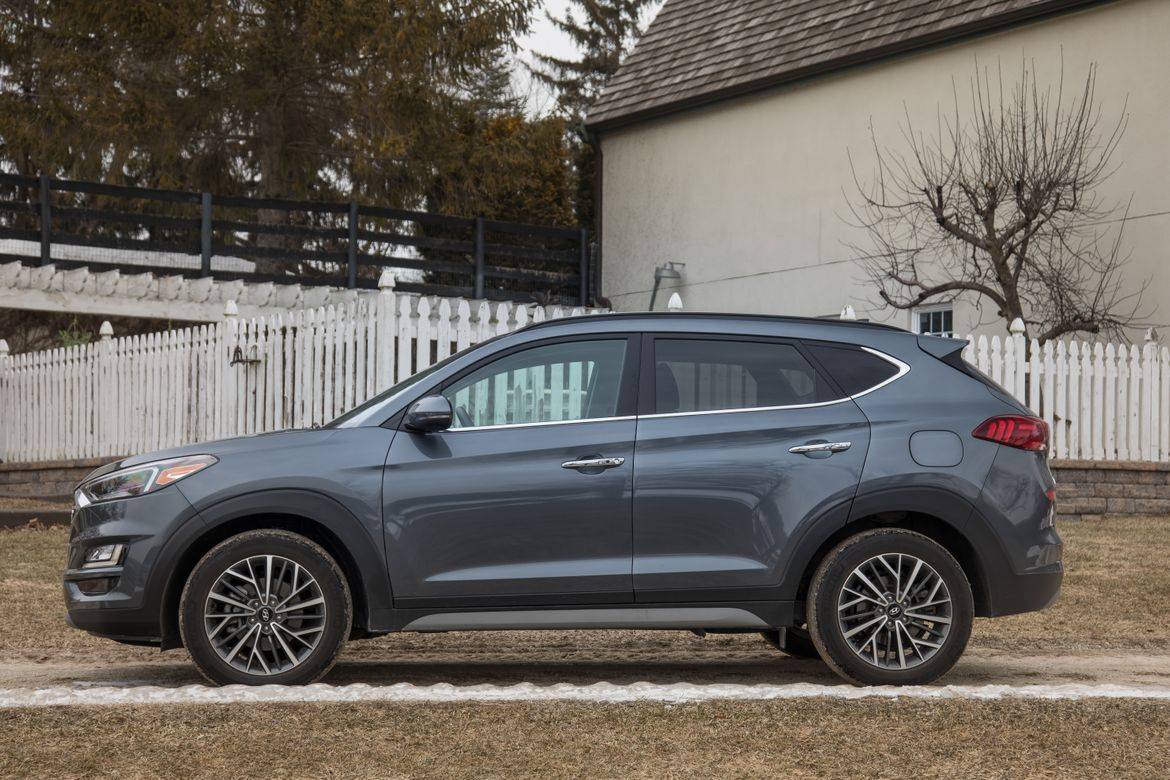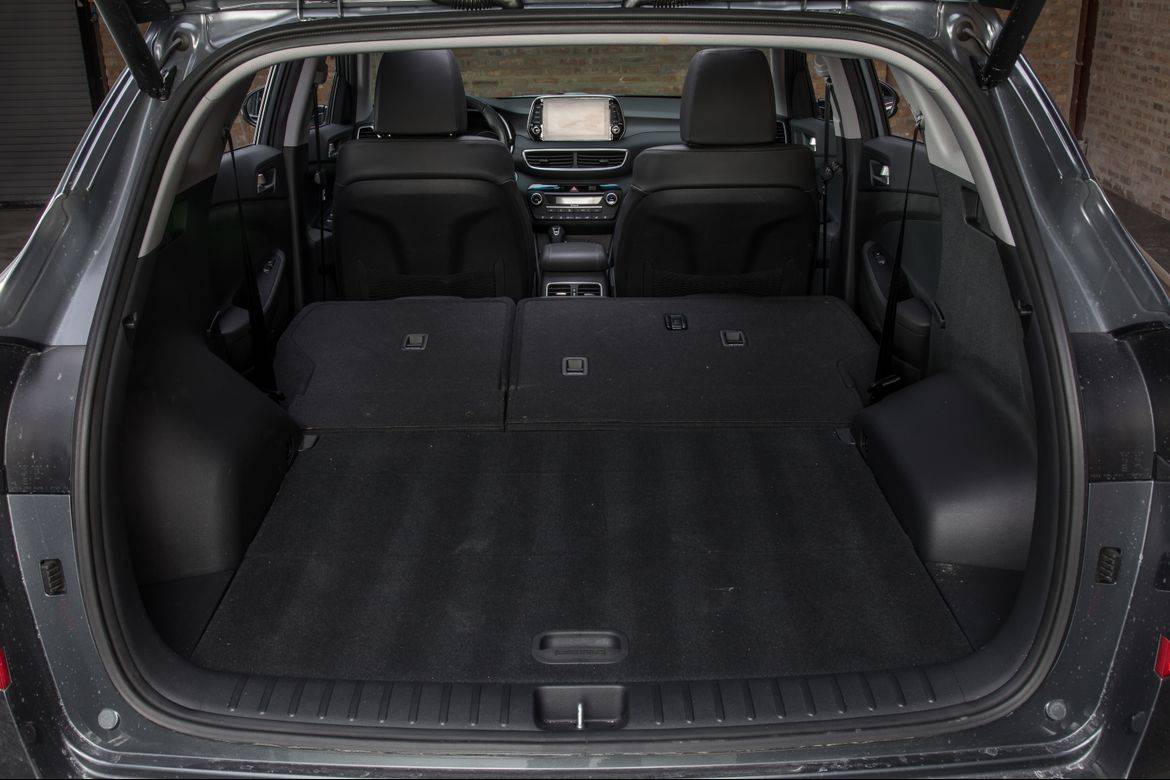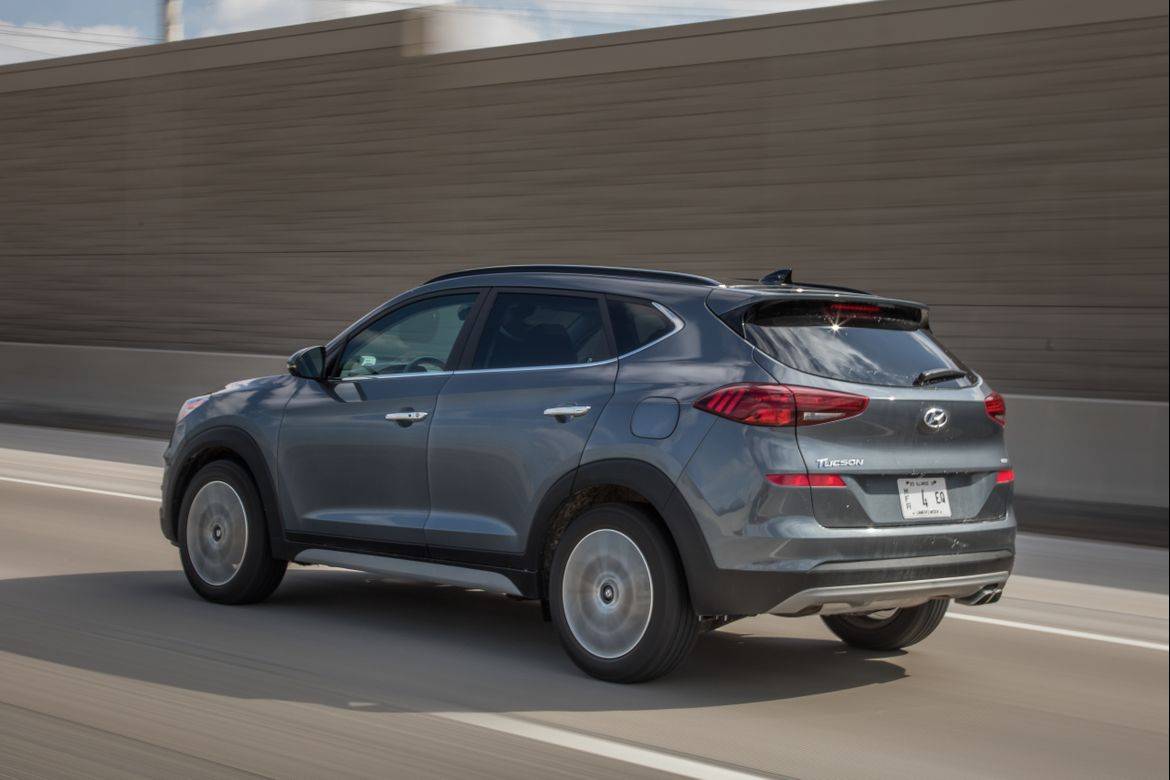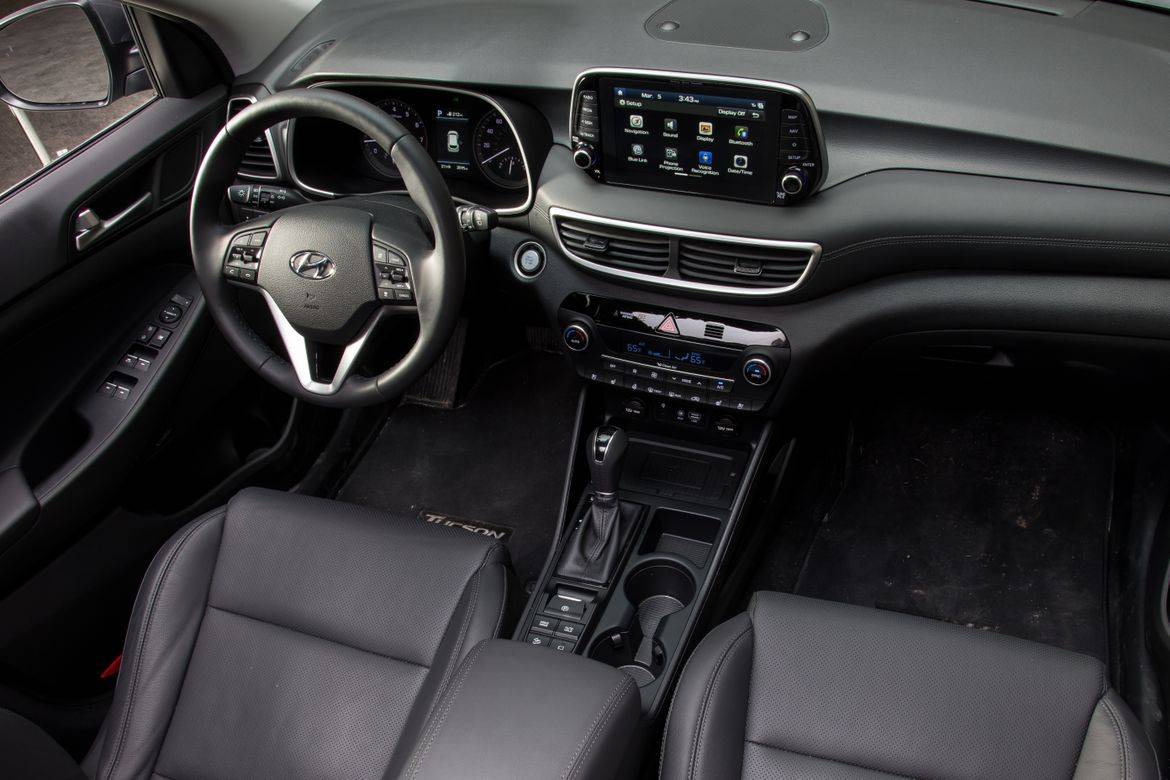2019 Hyundai Tucson: 8 Things We Like (and 4 Not So Much)

There’s no time to rest when you’re keeping pace with popular compact SUVs like the Honda CR-V, Nissan Rogue, Toyota RAV4 and Volkswagen Tiguan. That’s why the 2019 Hyundai Tucson has received a mid-cycle update to keep it competitive in terms of comfort, safety, cargo space, technology and overall value — in other words, pretty much everything people are looking for and expect in an affordable and practical compact SUV.
Related: 2019 Hyundai Tucson Review: Updates Freshen Journeyman Compact SUV’s Appeal
- ${price_badge()}
- ${ami_badge()}
- ${battery_badge()}${ev_report_link()}
- ${hot_car_badge()}
- ${award_badge()}
- ${cpo_badge()}
${price_badge_description}
${ami_badge_description}
The EV Battery Rating is based on this vehicle's current expected range relative to the vehicles expected range when new. ${battery_badge_text}
This vehicle is certified pre-owned, backed by a manufacturer warranty, and typically undergoes a rigorous multi-point inspection to ensure quality and reliability.
This vehicle is currently in high demand given its competitive price, desirable features, and overall condition, and may have a higher chance of selling quickly.
Shop the 2019 Hyundai Tucson near you


As we’ve discovered in comparison tests and reviews, the 2019 Tucson doesn’t stand out in any one key area. That doesn’t mean it gets lost in the crowd, however: We found the new Tucson to be competent on the road, and a great value when you start adding options. A new engine provides smoother driving behavior compared to the previous model, too. And even the Tucson’s smaller size can be an asset for anyone who prefers an SUV that’s easier to park.
A few things could use fixing, however. This includes the Tucson’s mediocre fuel economy, some chintzy cabin materials and the lack of some tech items found on rivals. You can read our complete review of the 2019 Hyundai Tucson by following the related link above, or check out our recent comparison test of seven compact SUVs to see how the updated Tucson fared in this increasingly competitive market.
But for a quick rundown about the SUV’s highs and lows, just keep reading. Here are eight things we like, and four we don’t, about the 2019 Hyundai Tucson:
Things We Like
1. Smooth Powertrain
A previously optional turbocharged four-cylinder engine goes away and, in its place, Hyundai now offers a naturally aspirated 2.4-liter four-cylinder. This engine produces a total of 181 horsepower and 175 pounds-feet of torque. The torque figure is less than what the outgoing turbo 1.6-liter engine provided, but during our time with the Tucson, we discovered the 2.4-liter and six-speed automatic are more refined and better-behaved in all driving situations. Granted, the turbo motor had more punch from a standstill. Yet the 2.4-liter four has plenty of power for routine driving, and gearshifts are smoother than before. For the 2019 model year, the Hyundai Tucson comes standard with a 161-hp, 2.0-liter four-cylinder coupled to a six-speed automatic transmission, which carries over from 2018.
2. More Safety Features
The base version of the Hyundai Tucson is fitted with forward collision warning, automatic emergency braking and lane keep assist. Moving up one trim level nets you blind spot monitoring and rear cross-traffic alert. Other available safety items include automatic high beams, driver attention alert and adaptive cruise control. For 2019, the Tucson earned a Top Safety Pick rating from the Insurance Institute for Highway Safety.
3. Flexible Cargo Area
We’ll be the first to admit the Tucson doesn’t have the sheer cargo-toting capacity of some rivals. Both the Honda CR-V and Nissan Rogue have about an 8-cubic-foot advantage over the 31 cubic feet of room the Hyundai provides behind its backseat. But this comparative shortfall doesn’t make the Tucson cramped or impractical; in fact, a two-tier cargo floor creates a handy flat surface when the rear seatbacks are folded down. You then have the option of storing items you want kept out of view beneath this stacked floor. A smart and convenient hands-free tailgate — which requires no button pushing or wagging feet under rear bumpers — is also optional.

4. Smaller and Easier to Maneuver
We’ve noted that the Tucson is smaller than competing compact SUVs, including the Rogue and CR-V. This could appeal to shoppers who don’t need all that acreage, particularly if parking is at a premium. Thanks to its slightly scaled-down proportions, the Tucson could be a better choice for city-dwelling SUV buyers.
5. Better Ride Quality Than Before
Ride quality in the 2019 Tucson takes a solid step in the right direction, particularly in higher trim levels. In our review, we credited this to Hyundai fitting upper trims with 18-inch wheels versus the 19-inch wheels used previously. Bigger wheels look cool, but they can make for a rougher and more jittery ride.
6. Great Warranty
Hyundai offers an excellent warranty and that alone could catapult this compact SUV to the top of many shopping lists. This includes five years/60,000 miles of vehicle coverage, along with 10 years/100,000 miles of powertrain coverage. A strong warranty can be a major selling point for anyone looking to purchase an SUV versus taking out a lease.

7. Value Leader, Especially in Top Trims
Ironically, the 2019 Hyundai Tucson becomes a better value the higher up you go in the trim levels. A starting price of $24,245 for the base trim (all prices include destination) is already very competitive. Step up to the Tucson Ultimate, which comes fitted with loads of comfort and safety touches, and you’ll see the price difference between the Hyundai and key rivals works even more to the Tucson’s advantage. At $33,995 to start, a Tucson Ultimate with all-wheel drive costs much less than a similarly equipped Honda CR-V or Toyota RAV4.
8. Intuitive Infotainment System
The 7-inch touchscreen in the Tucson is simple to use, with clear controls and menus. Standard touches like Android Auto and Apple CarPlay compatibility are nice to have onboard, too. (A larger 8-inch screen is offered with the range-topping Ultimate trim.)
More From Cars.com:
- 2019 Hyundai Tucson MPG: Our Real-World Testing Results
- 2019 Hyundai Tucson Adds Value, Safety to Bottom Line
- How Do Car Seats Fit in the 2019 Hyundai Tucson?
- Hyundai Tucson N Line Stays in Line With Sporty-Styled Siblings
- Research the 2019 Hyundai Tucson
Things We Don’t
1. Fuel Economy
The 2018 Hyundai Tucson was only mid-pack when it came to fuel economy and, strange as it sounds, the new and improved model sinks lower down the scale. While we complimented the smoother driving manners of the new 2.4-liter four-cylinder, there’s no ignoring that it’s less fuel-efficient than the turbo engine it replaces. Fitted with the 2.4-liter, the 2019 Tucson returns 22/28/25 mpg city/highway/combined in front-wheel-drive format; this drops to 21/26/23 mpg with all-wheel drive. That’s below the mileage figures of many compact SUV rivals and 2 mpg lower than what the outgoing 1.6-liter turbo engine offered. The Tucson’s base four-cylinder is slightly better, though not by much.
2. Cabin Materials
There’s room for improvement when it comes to trim materials used throughout the Tucson’s cabin. While the general interior layout is pleasant, you can’t help noticing how many surfaces are made up of cheap-feeling plastic. A few soft-touch surfaces and better-quality materials would help the Tucson feel like a more premium product.

3. Obstructed View
During our 2019 Compact SUV Challenge, we couldn’t help but notice the limited outward visibility of the Tucson. In fact, the Tucson tied the Jeep Cherokee for the lowest visibility of the seven vehicles we tested. The pinched view toward the rear corners of the Hyundai was particularly annoying.
4. Missing Some Tech Features
Hyundai offers a lot of nice touches on the 2019 Tucson, but a few items are missing from the options sheet. That includes onboard Wi-Fi, not to mention more than one USB outlet for those seated up front. These little things matter a lot to SUV shoppers, especially in a field full of strong competition.
Cars.com’s Editorial department is your source for automotive news and reviews. In line with Cars.com’s long-standing ethics policy, editors and reviewers don’t accept gifts or free trips from automakers. The Editorial department is independent of Cars.com’s advertising, sales and sponsored content departments.
Featured stories

15-Year Car Loans Aren’t a Thing, But Americans Are Getting More Comfortable With Long Loan Terms

2025 Kia Telluride Review: Rougher Roads Ahead



